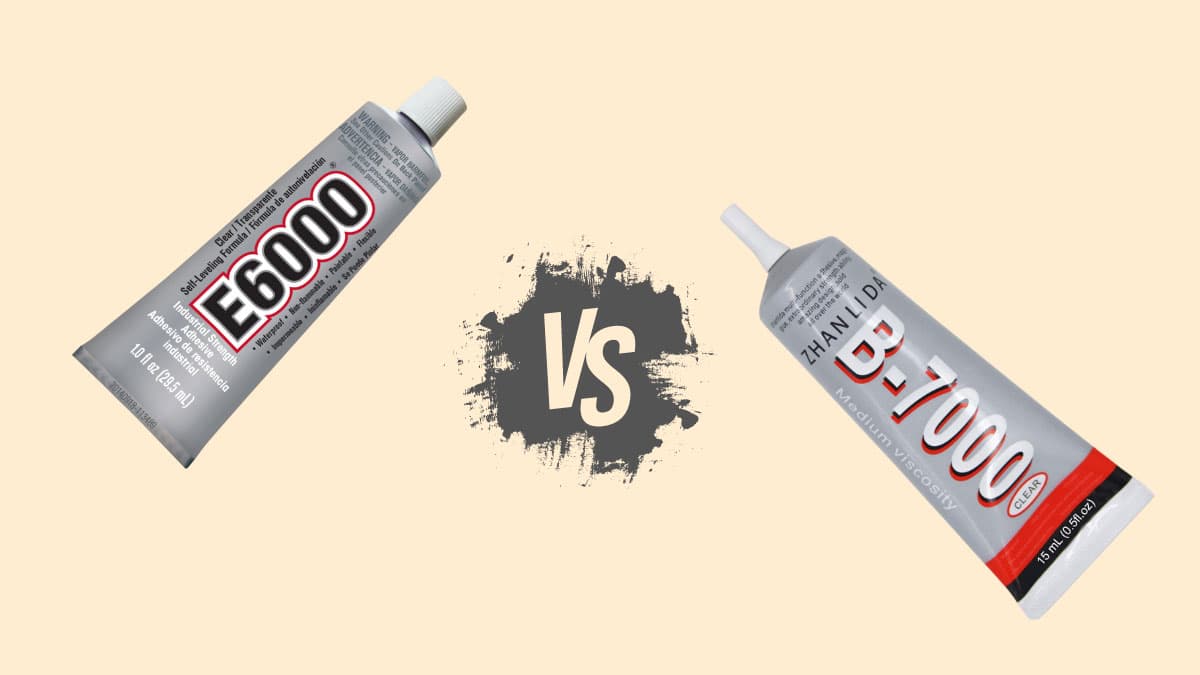B7000 vs E6000: Which Multi-Purpose Adhesive Is Right for You?
Compare B7000 and E6000 adhesives - discover their unique strengths in bonding power, versatility, and value. Make an informed choice for your DIY or professional projects.

When it comes to versatile adhesives, both B7000 and E6000 have earned their reputation as go-to solutions for crafters and professionals alike. Whether you're repairing electronics, creating jewelry, or tackling heavy-duty repairs, choosing the right adhesive can make all the difference. Let's dive into a detailed comparison to help you make the best choice for your needs.
Understanding B7000 and E6000 Adhesives
Both B7000 and E6000 are multi-purpose adhesives that excel at bonding various materials. Their versatility makes them popular choices for both DIY enthusiasts and professional craftspeople.
Why these adhesives stand out:
- B7000: Known for precise application and quick curing, perfect for detailed work like phone screen repairs and jewelry making.
- E6000: Favored for its industrial-grade strength and weather resistance, ideal for outdoor and heavy-duty repairs.
Basic Introduction to Both Adhesives
What is B7000?
B7000 is a clear, flexible adhesive that's become a favorite among DIY enthusiasts and professionals for its ease of use and waterproof properties. It's particularly popular for electronic device repairs and craft projects requiring precision.
Key Features:
- Quick curing time for faster project completion
- Flexible bond that resists vibration
- Crystal clear finish for clean results
What is E6000?
E6000 is an industrial-grade adhesive renowned for its exceptional bonding strength and weather resistance. It's particularly suited for projects requiring long-term durability, such as furniture repairs and outdoor installations.
Key Features:
- Superior strength for heavy-duty applications
- Temperature resistant for extreme conditions
- Waterproof and weatherproof for outdoor use
Application Areas
| Type | Best Uses |
|---|---|
| B7000 | Phone screen repairs, jewelry making, precision electronics assembly |
| E6000 | Heavy furniture repairs, industrial equipment, outdoor installations |
Technical Comparison
- Viscosity and Flow Properties
- B7000: Lower viscosity for precise application, excellent for small gaps and detailed work
- E6000: Higher viscosity, better for thicker applications and uneven surfaces
- Curing Time Comparison
- B7000: Surface cures in 4-6 hours, full cure in 24 hours - ideal for time-sensitive projects
- E6000: Longer surface cure time, typically 24+ hours for full cure - best for projects without time constraints
- Temperature and Water Resistance
Both offer water resistance, but with different strengths:
- B7000 excels in high-humidity environments
- E6000 shows superior stability in extreme temperatures
Performance Analysis
- Material Compatibility
- B7000: Exceptional on plastics, glass, and metals; ideal for precision repairs
- E6000: Superior performance on wood and ceramics; excellent for porous materials
- Ease of Use
B7000's user-friendly application and quick curing make it ideal for beginners, while E6000's industrial strength requires more expertise but delivers professional-grade results.
- Durability
E6000 stands out for its industrial-grade strength in long-term applications, while B7000 focuses on flexibility and water resistance for versatile use.
Environmental and Safety Considerations
- B7000 Safety Profile
B7000 features a low-toxicity formula with minimal odor, making it suitable for indoor use and confined spaces.
- E6000 Safety Profile
E6000 contains VOCs (Volatile Organic Compounds) - use in well-ventilated areas and avoid prolonged contact.
Cost Analysis and Value
- Price Comparison
- B7000 typically offers better value for everyday users
- E6000's higher price reflects its industrial-grade performance
- Coverage and Value Assessment
While E6000 costs more initially, its superior coverage area may provide better long-term value for larger projects.
User Experience and Real Cases
- B7000 Users: Praise its precision and effectiveness, especially in electronics and jewelry work
- E6000 Users: Value its strength and reliability, particularly in outdoor and industrial settings
Making Your Choice: B7000 or E6000?
Choose based on your specific needs:
- Everyday Home Use: Go with B7000
- Professional/Industrial Use: Choose E6000
Frequently Asked Questions
- Storage Guidelines?
Store both adhesives in a cool, dry place away from direct sunlight.
- Cleaning Uncured Adhesive?
B7000 can be wiped clean with a damp cloth; E6000 requires specific solvents.
- Can They Be Mixed?
No, mixing is not recommended as it may compromise bonding properties.